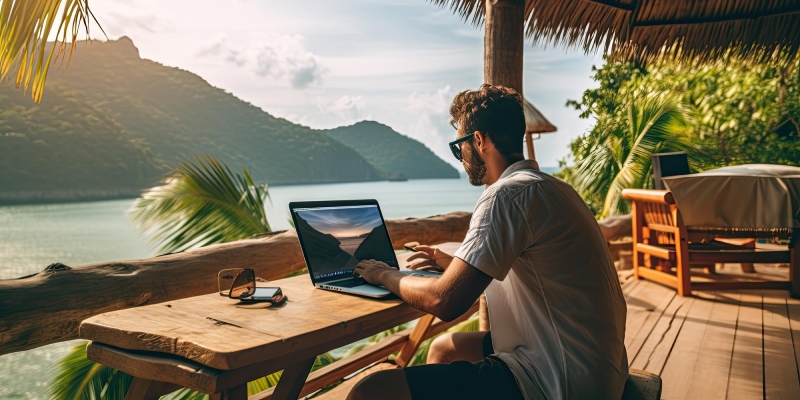Badlands National Park: Into The Land Of Sunrise, Sunset, And Stars | Stargazing At Badlands National Park
BY Sibashree Sep 30, 2024
Guest speakers from Dark Ranger Telescope and NASA attended the “Astrofest Festival” at Badlands National Park this year (July 5 to 7, 2024). In this celebration of the night sky and astronomy, the guest speakers discussed various aspects of space. The 2024 fest included the following activities. Scale model of the solar system in the afternoon An early evening solar viewing program Guest speaker session “These are objects that have been important to our culture since we could probably talk. So, we think it’s important to maintain that connection and bring back that connection to these things that used to be so important to us for thousands of years.”Ed Welsh, the education specialist at Badlands National Park The yearly Astrofest Festival at the park indeed has a role in making the park a favorite for star gazing and exploring the night sky. Also, the remote location of the park and minimal light pollution here make it a wonderful site in South Dakota for watching the celestial bodies in action. Further, this park is a wonderful place to soak in the beauty of sunrise and sunset, making it the land of light and stones! Night Sky Viewings/ Stargazing At Badlands National Park View this post on Instagram A post shared by Badlands National Park (@badlandsnps) Everyone talks about the geology, wildlife, and fossils of Badlands National Park. However, if you are an introvert and always seek an immersive experience like me, night sky viewing will be your favorite activity at the park. In fact, I feel that watching the night sky is the chef’s kiss in the park tour. The stargazing activity takes place near the park’s Cedar Pass area, which is close to the visitor center. Further, the rangers inform you about the celestial bodies you will see. You just need to keep your eyes glued to the telescope to explore celestial bodies, such as the Milky Way, star clusters, planets, satellites, and nebulae. The table below gives a quick excerpt of the stargazing and night sky viewing experience at Badlands National Park. Stargazing And Night Sky Viewings At Badlands National Park LocationCedar Pass AmphitheaterSpecialtyMore than 7500 stars are exposed to each visitor. They especially enjoy the clarity of the Milky Way. Add-onsFly-overs by the International Space Station and many satellitesTelescopes Provided By Celestron and Badlands Natural History AssociationBest Season for StargazingSpring, Summer, and Fall In summer, the Night Sky Viewing Program starts after the evening star gazing session every day. The park rangers conduct this program. Further, its timing keeps changing based on the sunset hours. Best Places For Stargazing At Badlands National Park https://www.instagram.com/p/Cc1WjJfoGBB/ Badlands National Park has earned a name in astrotourism thanks to its pristine nature. With fewer pull-outs and roads, the north unit of the park especially has many amazing stargazing destinations. Let’s explore them! The Space Tourism Guide features the Badlands National Park and the Badlands National Park Observatory as some of the best places for stargazing in South Dakota. Badlands Observatory became accessible to visitors in May 2021. It is a privately owned facility in the Badlands National Park. Also, it works for astronomical education and research. Cedar Pass Campground Amphitheater Between Memorial Day and Labor Day, the Cedar Pass Campground Amphitheater has a Night Sky Viewing event every day. This experience is about gathering more information by stargazing in a structured setup. You must visit the Ben Reifel Visitor Center every day to learn about the program. Badlands Loop Road Like many other parts of the Badlands National Park, the Badlands Loop Road also allows you to find your spot for stargazing. However, two of the best spots along the loop are: Burns Basin Overlook Yellow Munds Overlook These locations are especially great for taking photographs and indulging in tranquility. Sage Creek Rim Road The Sage Creek Rim Road is one of the least crowded spaces in the park. You will also get to see very few cars passing through the area. The Sage Creek Basin Overlook and Hay Butte Overlook are some of the best spots for stargazing on Sage Creek Rim Road. However, as very few people visit this area, you can find a stargazing spot of your own. Big Badlands Overlook Big Badlands Overlook may appear last on my list of places to stargaze in Badlands National Park. However, it is the first overlook for someone accessing the park from the Northeast Entrance or the Sioux Falls. Take a short walk and reach the best stargazing point in the Big Badlands Overlook. From here, enjoy a 360-degree view. The Backcountry The open backcountry of the Badlands National Park is a wonderland for camping and stargazing. So, just set your camp and enjoy stargazing for the entire night. Watching Sunrise And Sunset At Badlands National Park The magic hours of Sunrise and Sunset paint the Badlands National Park with the most vibrant shade of red. The table below shows the best points for watching the sunrise and sunset and the accessibility points. ActivityBest Spots In The ParkAccessibility Points with Boardwalks and for Visitors with Wheelchairs SunriseDoor TrailNorbeck Pass AreaDillon Pass AreaBig Badlands OverlookPanorama PointCastle Trail WestBig Badlands OverlookDoor Trail Panorama PointSunsetPinnacles OverlookCastle Trail EastNorbeck Pass AreaBigfoot Pass Picnic AreaConata Basin OverlookPinnacles Overlook Conata Basin OverlookBigfoot Pass Picnic Area As the Sun rises, its warm golden and red lights spread over the pinnacles that face the east. Further, the drama of light and shadow makes every frame mesmerizing. So, many photographers flock to Badlands National Park’s sunrise and sunset points for the best captures. Stargazing At Badlands National Park: Plan Your Trip Well There are two easy ways to reach the remoteness of the Badlands National Park. Reach the Rapid City Regional Airport and ride for an hour to Badlands National Park. Further, you can reach the Sioux Falls Regional Airport and take a road trip to Badlands National Park. This trip through South Dakota will take you around 4 hours. If you want to have the best stargazing experience at Badlands, you need to stay there overnight. You can reserve a room at the Cedar Pass Lodge in advance or stay at the Sage Creek Campground or Cedar Pass Campground. However, if you are an adventurous soul and want the most immersive experience, put a camp in the backcountry or the north and south units of the park. Don’t forget to collect your permit for backcountry camping in the Badlands National Park. Also read Top 10 Most Popular Paraguay Food That You Must Try. Top 13 Famous Wonders Of India That You Must Visit! [Updated 2024]













